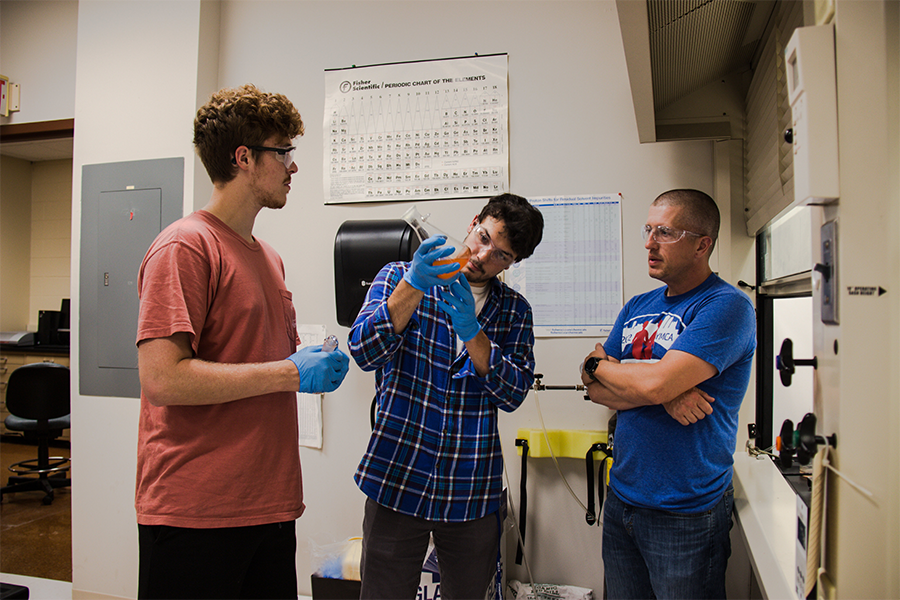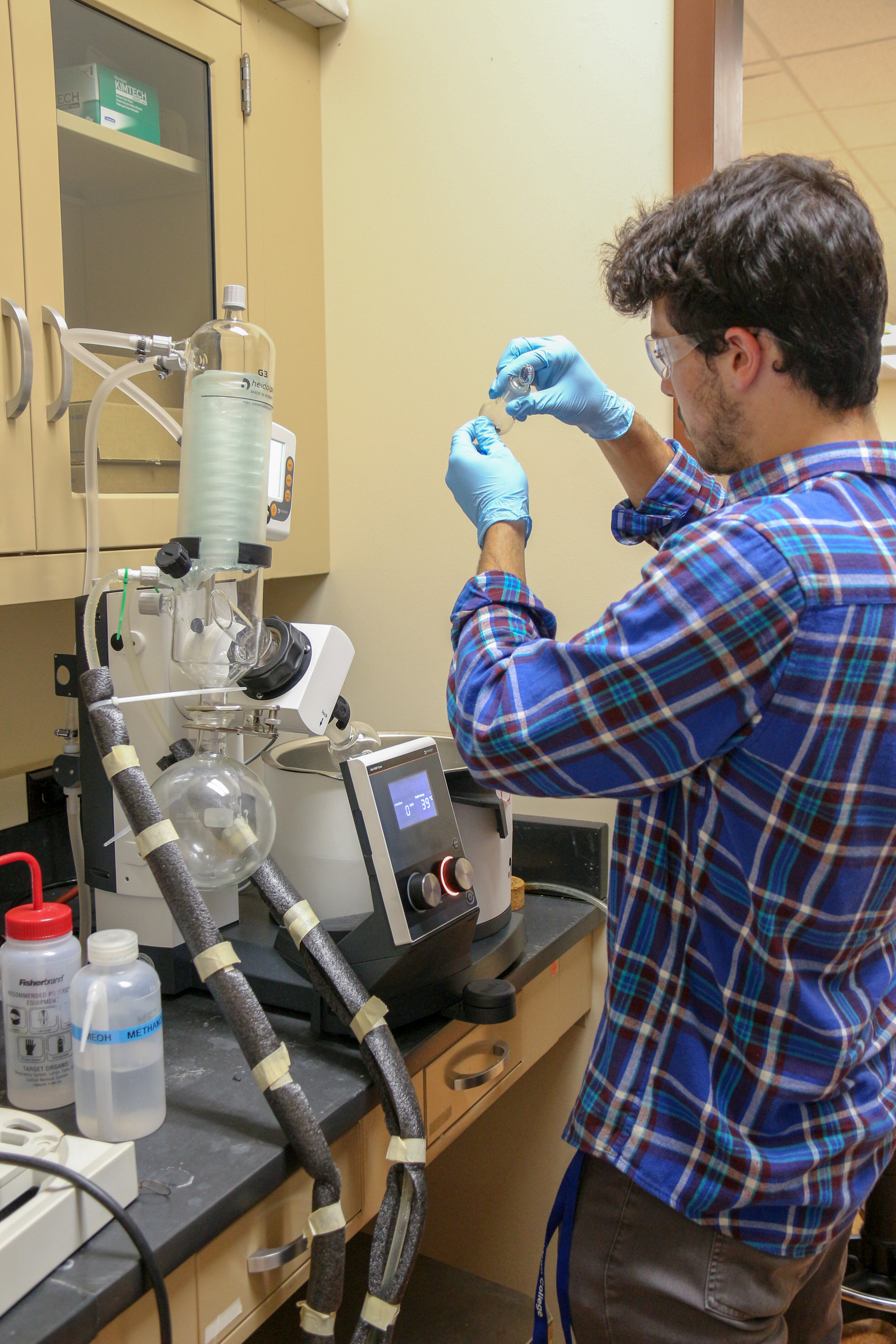Elizabethtown College Biochemistry and Molecular Biology major Connor Lawrence ’25 and Chemistry major Isaac Kraenbring ’25 are working on campus this summer, researching metal-organic frameworks (MOF) to determine if they can release platinum compounds into human cancer cells as a part of the Summer Creative Arts and Research Program (SCARP).
Their study consists of testing metal complexes using multiple substances to evaluate sensitivity levels within the complexes. If the MOF can release the compounds into the human cancer cells, they will research the potential use of the MOF as a drug delivery system that could be utilized in cancer treatment. Lawrence and Kraenbring will present their findings at the Landmark Conference Summer Research Symposium on July 20 and will be continuing their research throughout the fall semester.
Title of Research
Covalent Incorporation of Transition Metal Complexes into Metal-Organic Frameworks for Sensing and Delivery Applications
Student Researchers
Connor Lawrence ’25 (Biochemistry and Molecular Biology major)
Isaac Kraenbring ’25 (Chemistry major)
Faculty Mentor
Dr. Jeffrey Rood, Professor of Chemistry
Lawrence: This project involves the synthesis of chemotherapeutic platinum compounds and their addition into porous solids known as metal-organic frameworks (MOFs). We wish to study the plausibility of incorporating these compounds into the MOFs, as well as the ability of the MOFs to release the platinum compounds into human cancer cells.
Kraenbring: We are testing a metal complex in water to see if it is sensitive to anions like iodine, nitrate, cyanide, and more. Once we see if the complex is sensitive, we embed it into a metal-organic framework (MOF), to see if it continues to sense the anions. The MOF can sense the anions because it is a porous solid that can take in the water and anions which interact with the complex. We are also working to create different variants of the metal complex and plan to test the complex with cations like lead, mercury, and cadmium.
Why did you choose this topic?
Lawrence: Dr. Rood and I were initially interested in using metal-organic frameworks as devices for drug delivery into the human body. We became interested in how the common platinum chemotherapeutic cisplatin could be incorporated into the MOF structure to be delivered into the human body and decided to modify cisplatin using a specific ligand that had been used before in many of Dr. Rood’s projects as the means by which the drug could be incorporated.
Kraenbring: This topic interests me because of its potential environmental applications and the wide range of skills I can gain working with MOFs and metal complexes.
What is the most interesting aspect of this research?
Lawrence: The most interesting part of this research is the future potential of this project. Once studies are complete to determine if the MOFs can release the platinum compounds into human cancer cells, research will then be conducted on the effects in the body and effectiveness in treating cancer.
Kraenbring: The most interesting aspect has been working with new ideas, observing the metal complex interactions, and solving problems.
How has your faculty mentor helped you?
Lawrence: My mentor, Dr. Rood, and I have worked very closely on this project since we began it last winter. We created the design and goals for the project together, and we have further fleshed out what those look like over the course of last semester and this summer so far. Dr. Rood has also been very helpful in teaching me how to use new instruments and for having a strong leadership presence throughout the course of the project thus far.
Kraenbring: Dr. Rood has been fantastic throughout this past semester and the summer. He has given me new ideas to test, talked through complex problems, and taught me more about chemistry.
Hear from the faculty mentor – Dr. Jeffrey Rood
“Connor and Isaac are both great students and are genuinely interested in learning new things,” Rood said. “They quickly grasp concepts and are developing independence in their work. Each of them has taken the overarching research project that has existed for several years in new directions this summer.”


